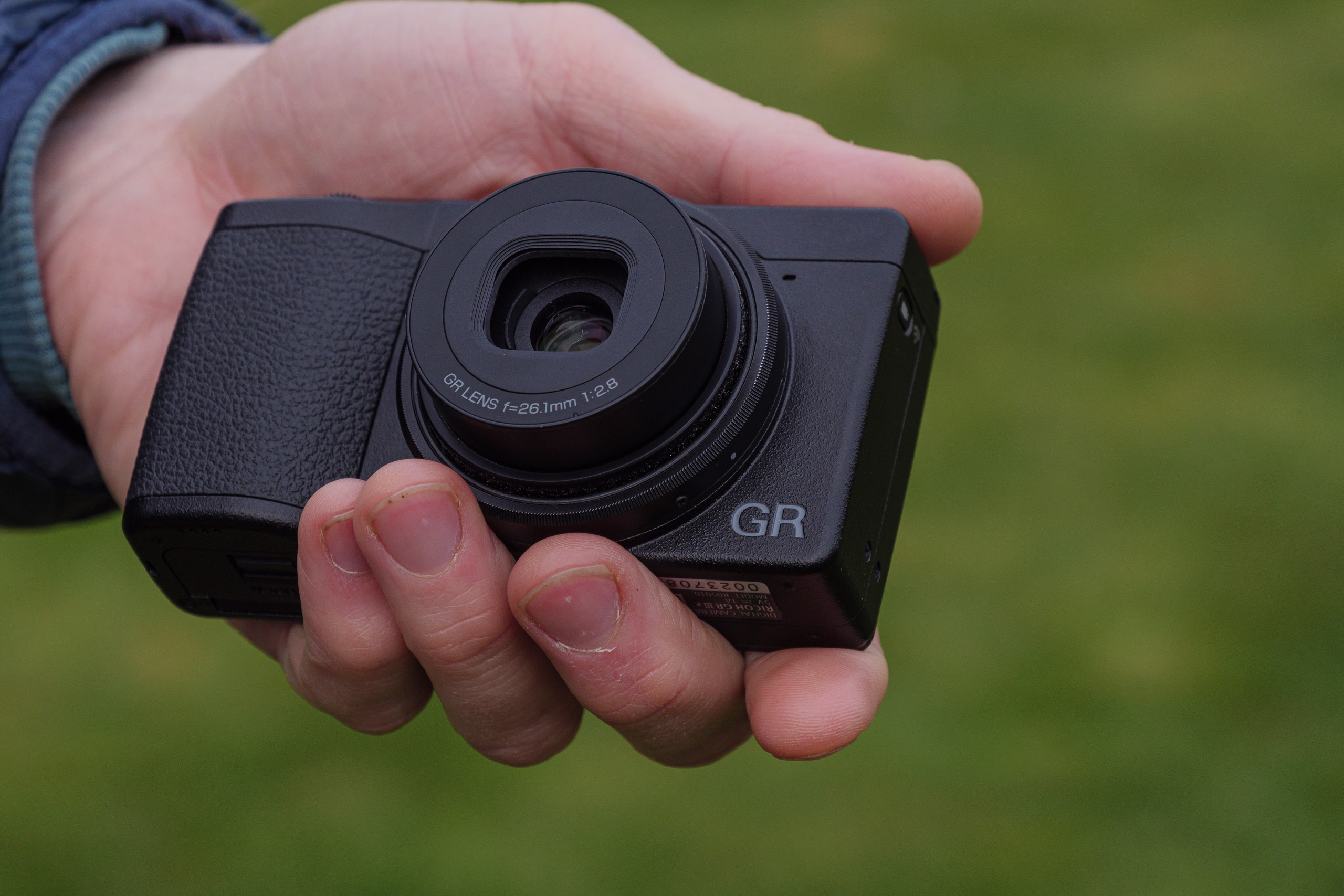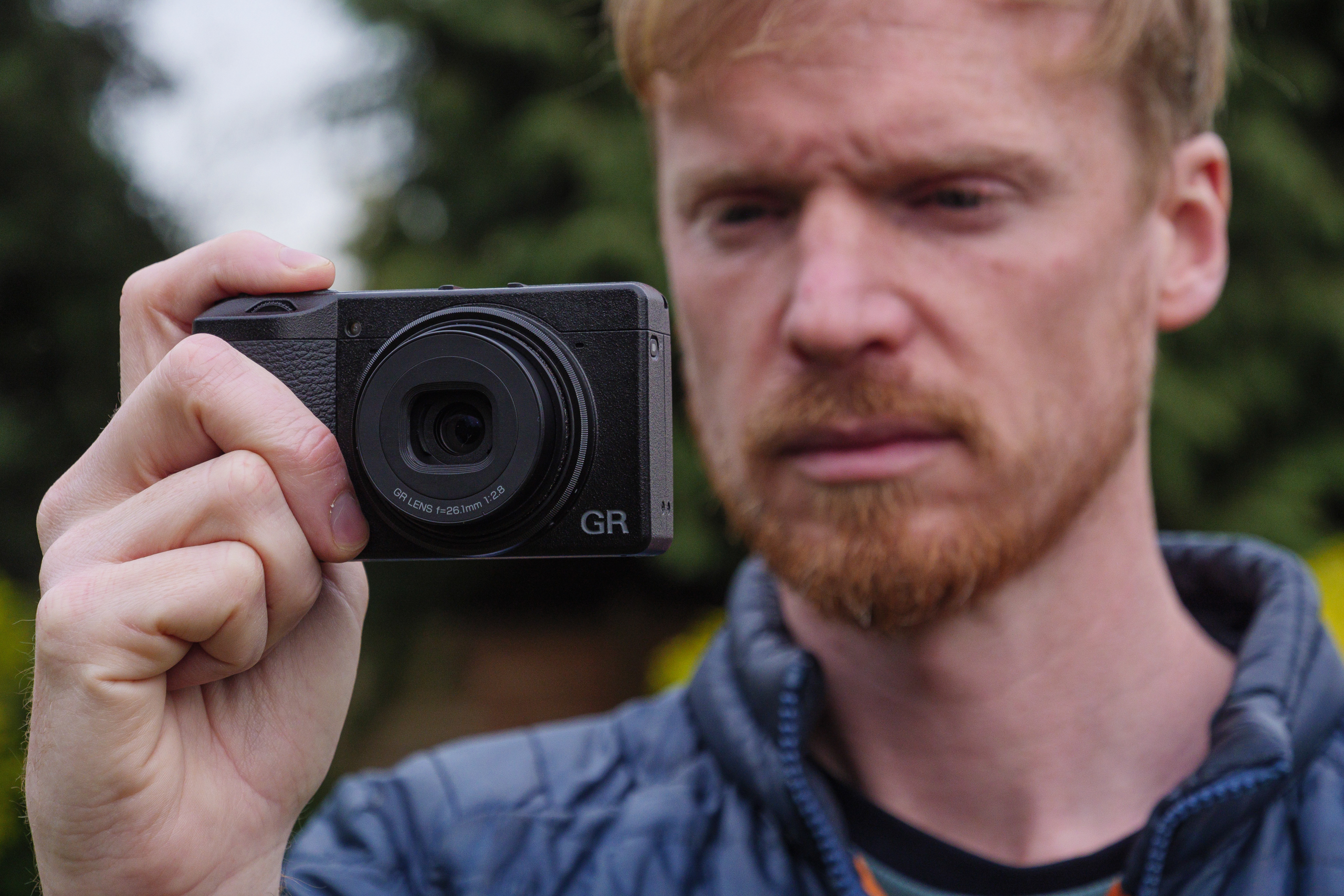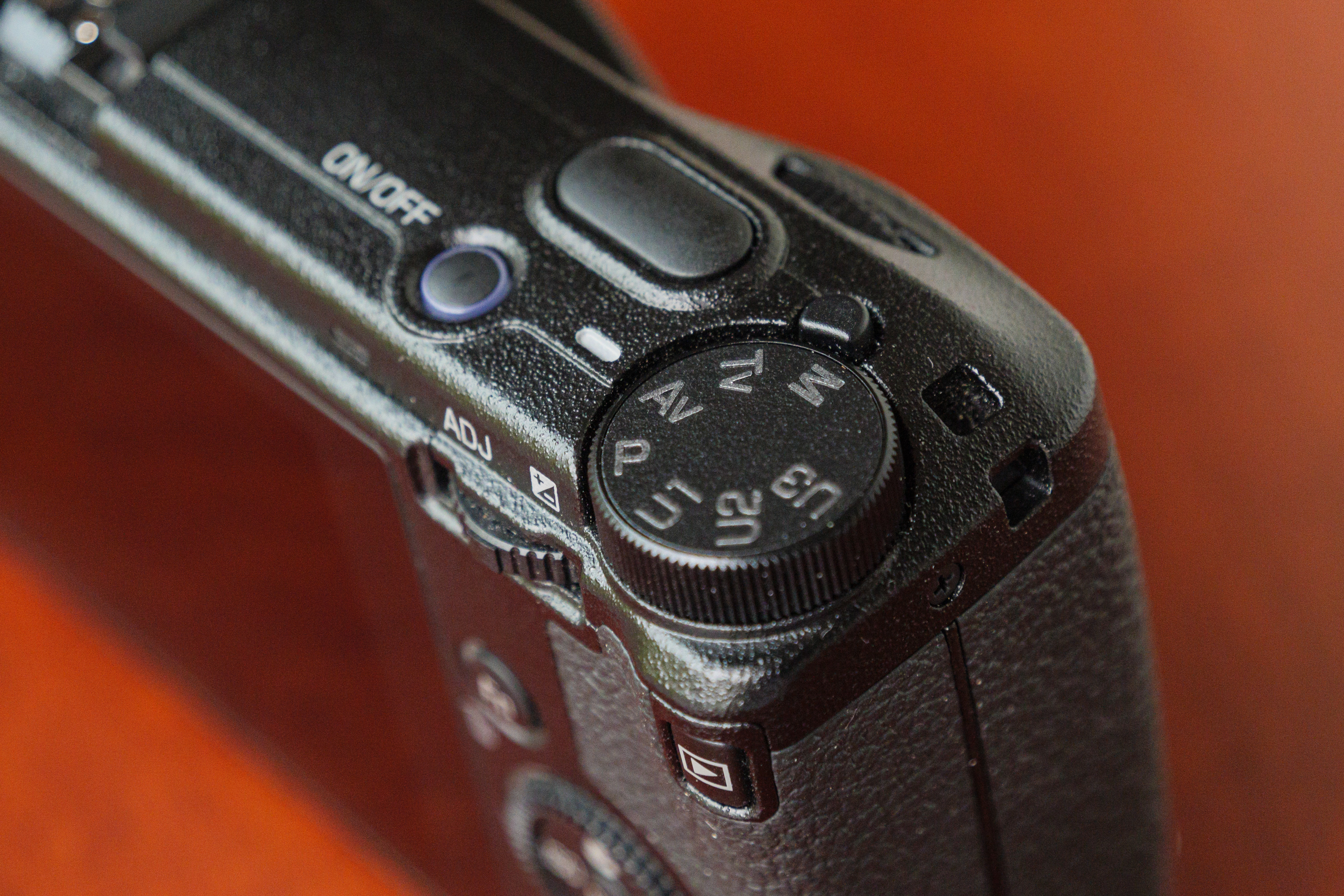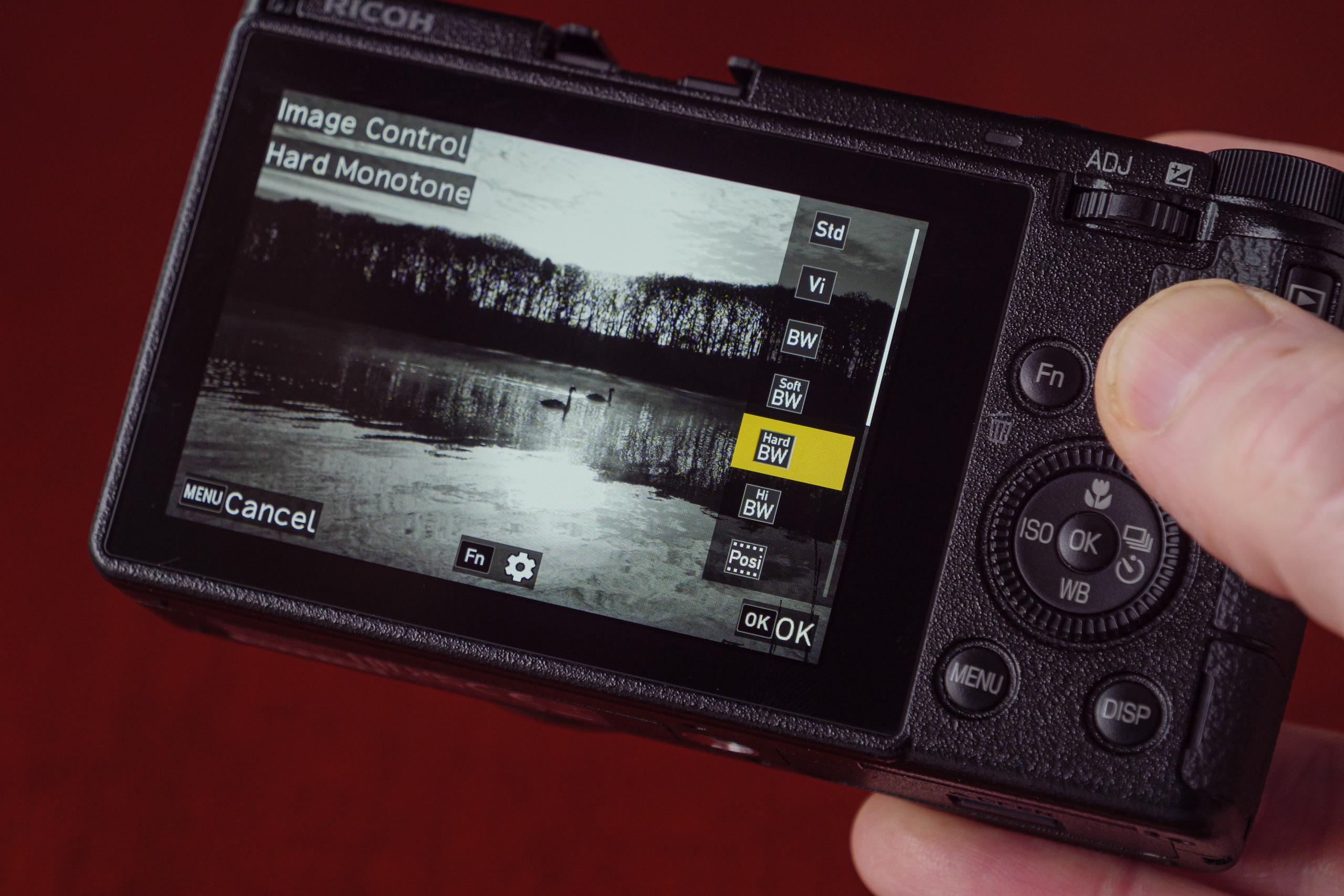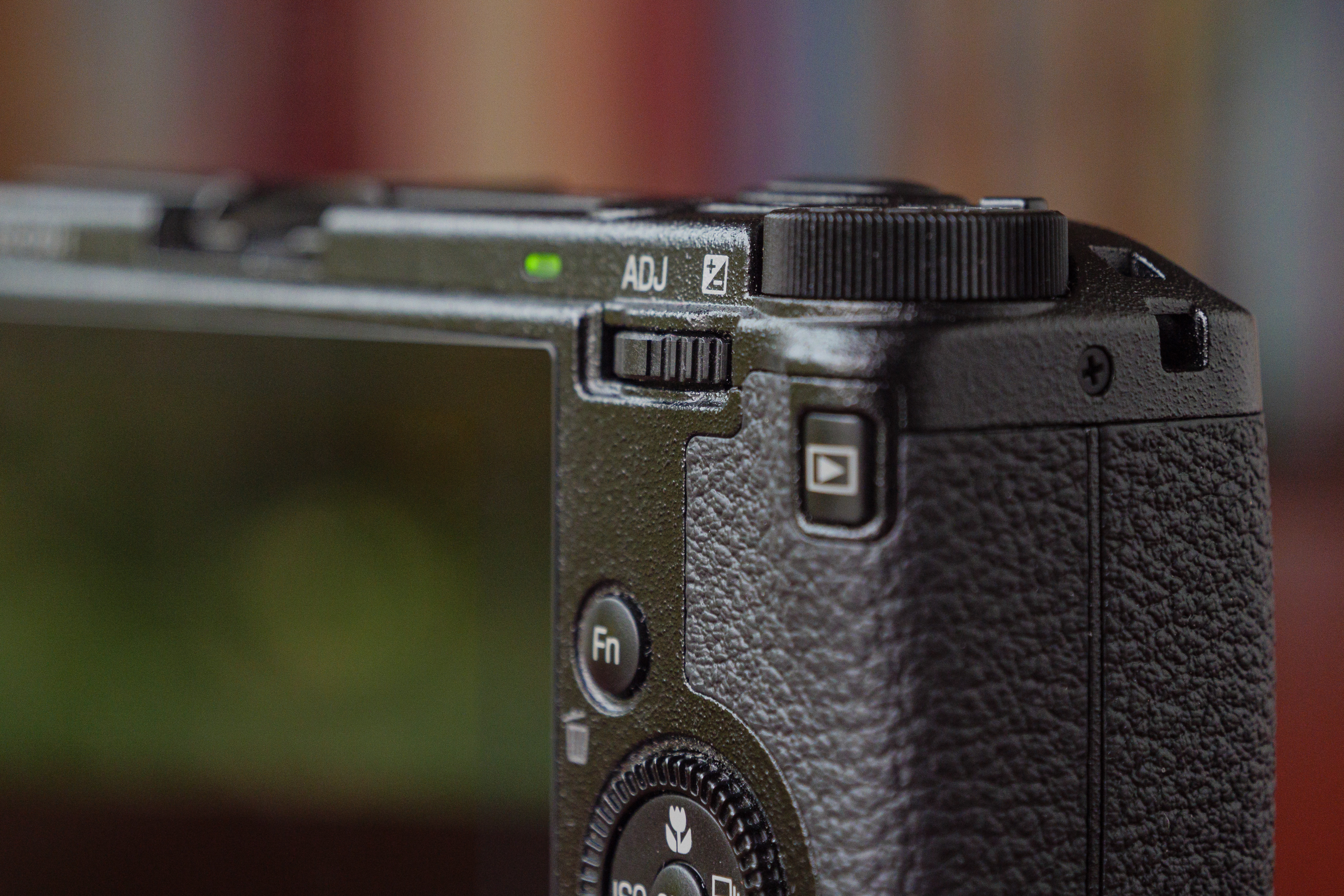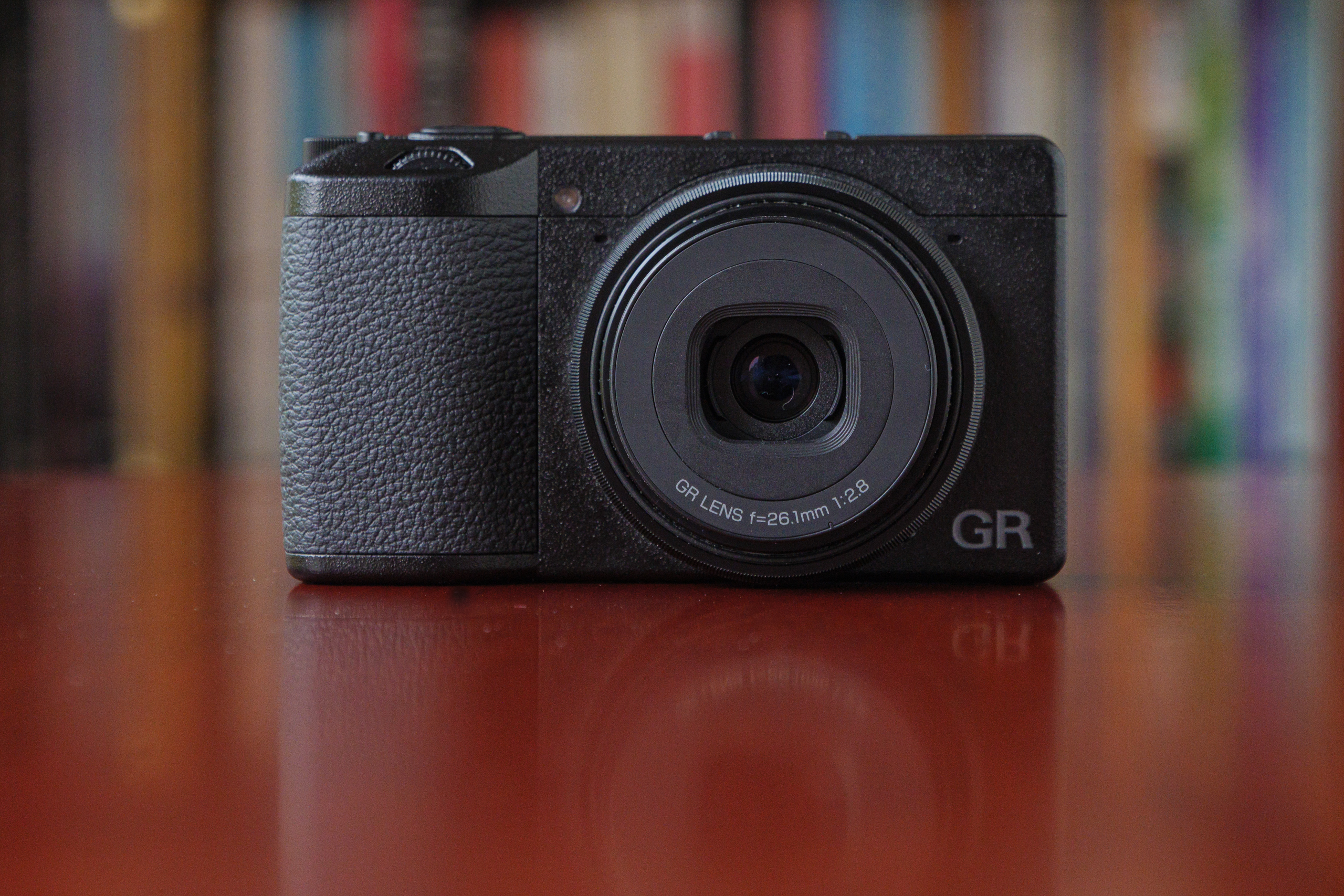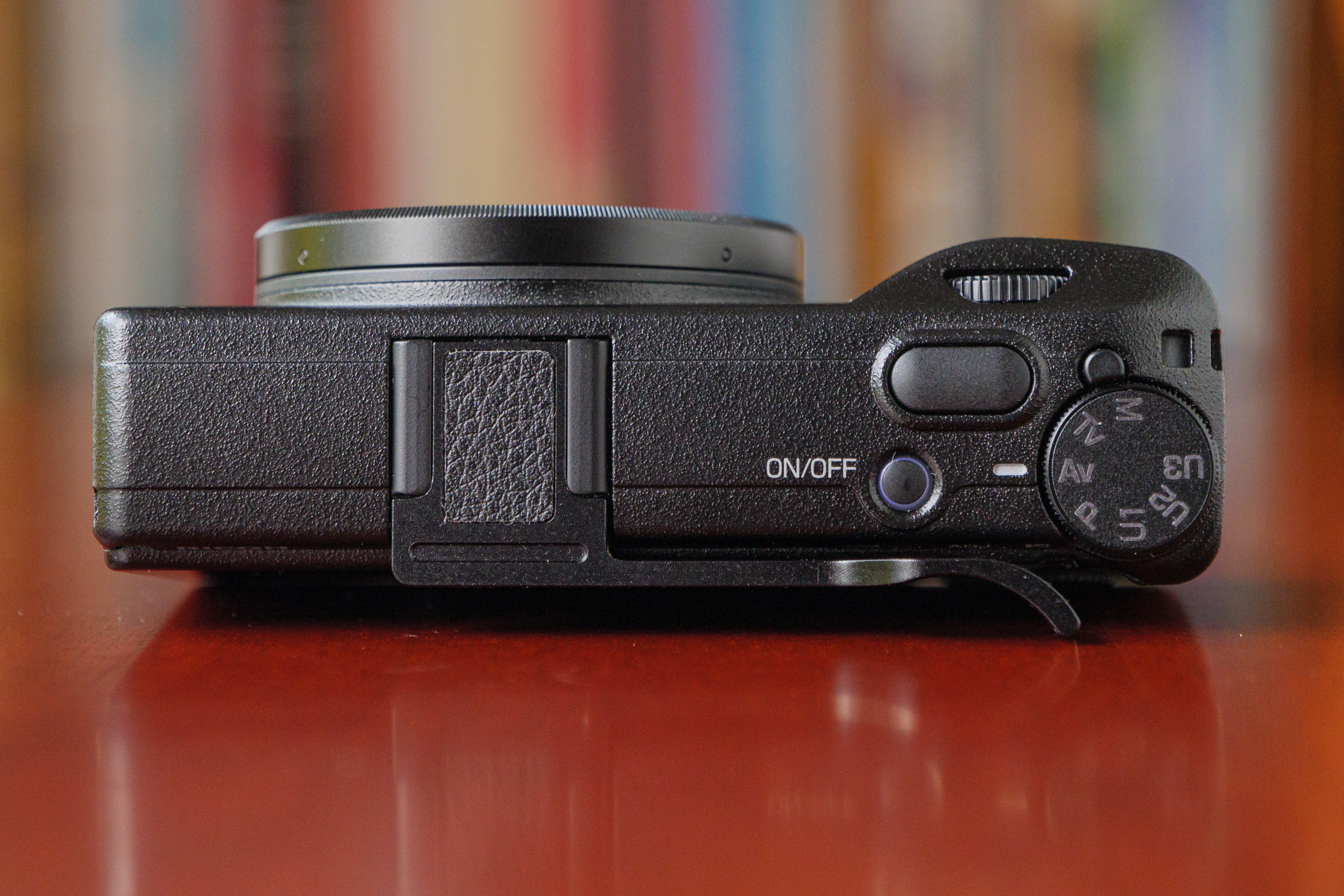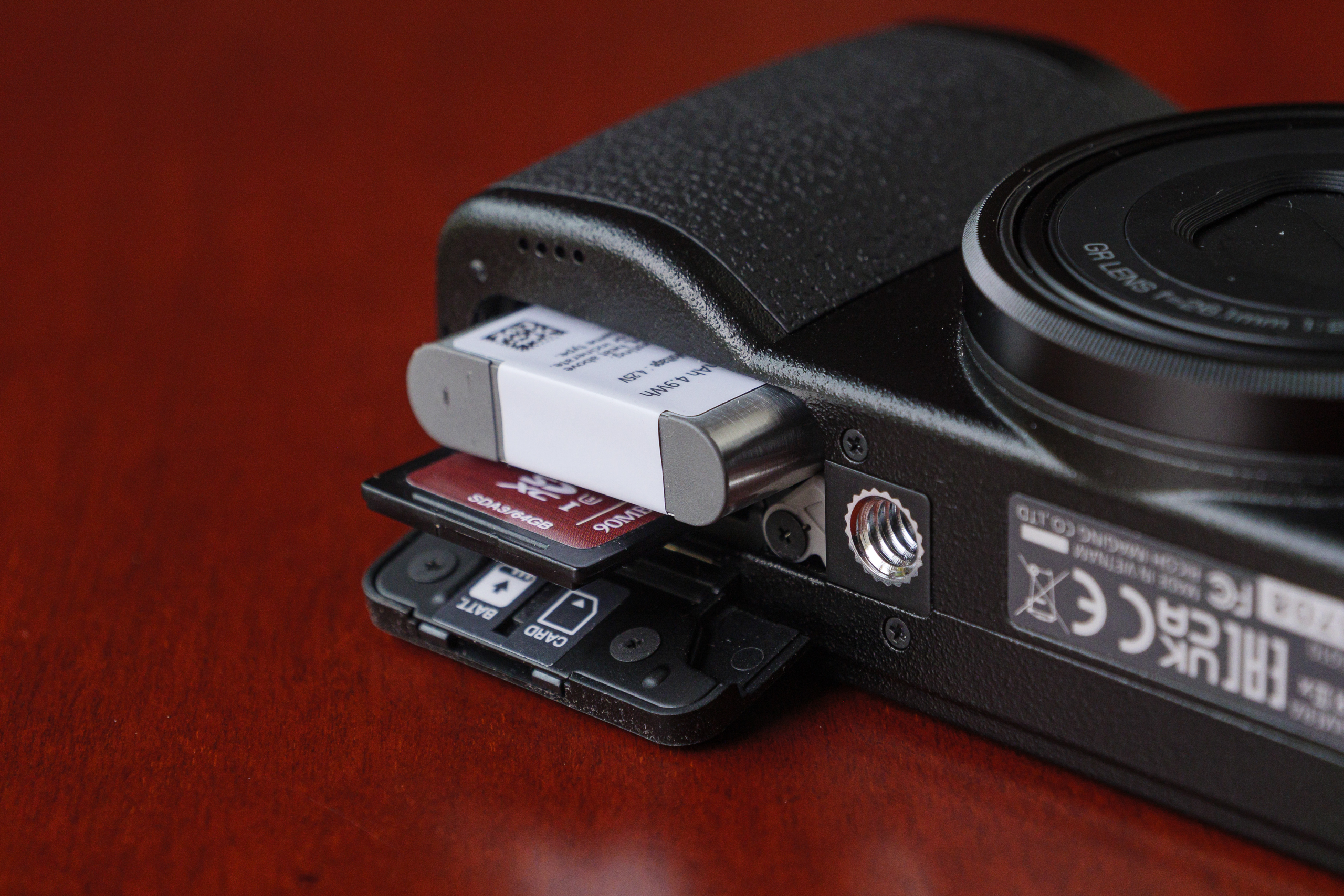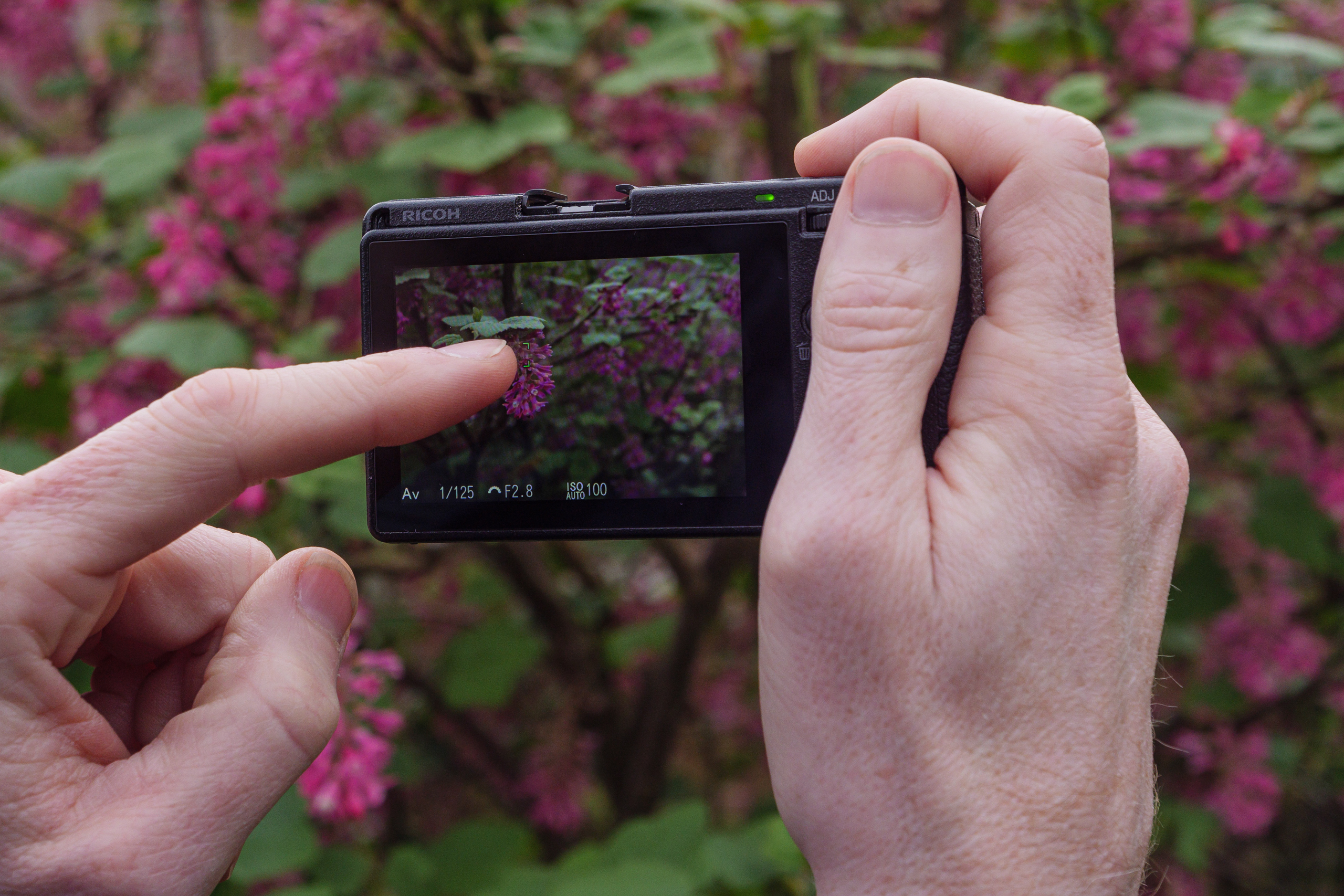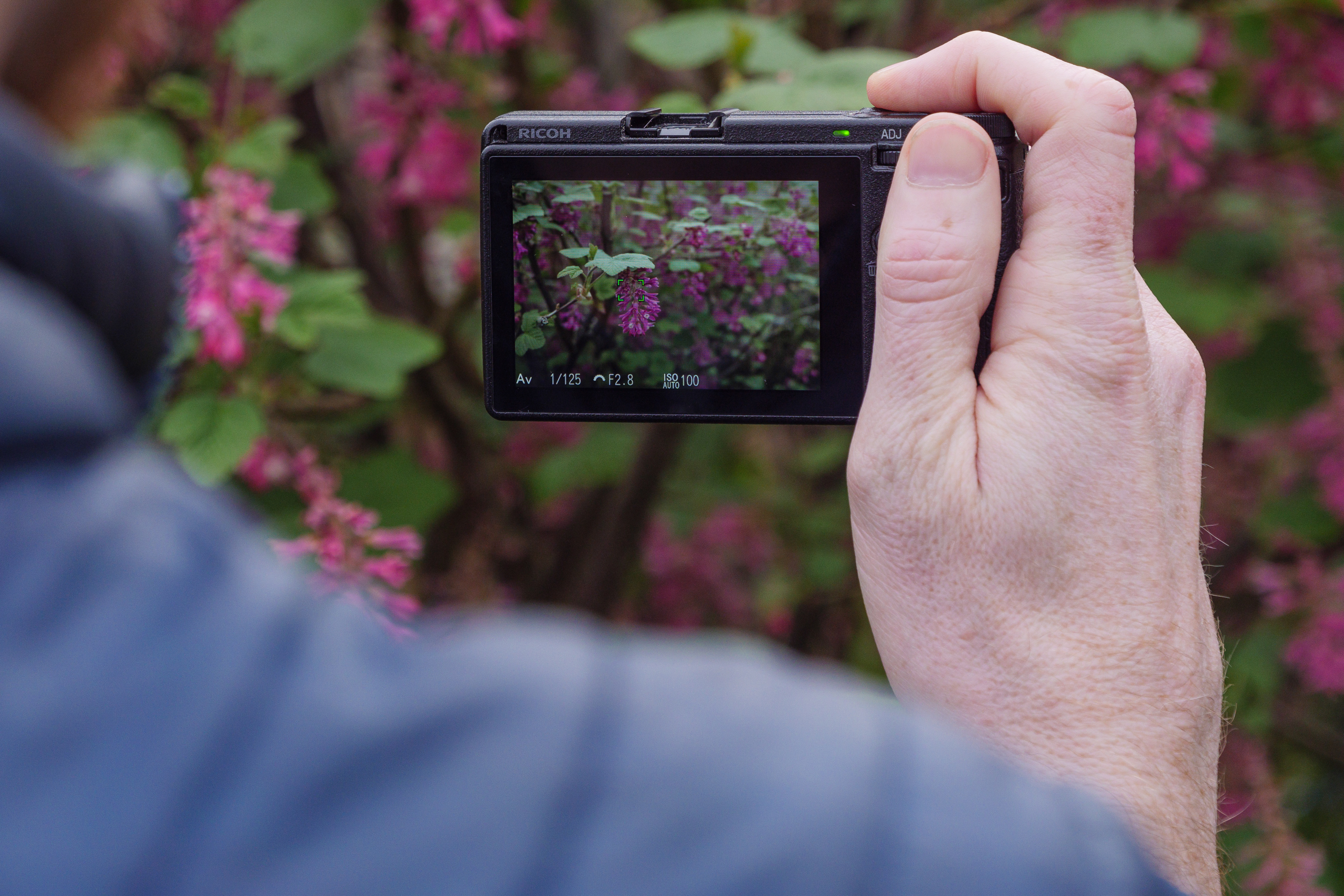Amateur Photographer verdict
The Ricoh GRIIIx finds a nice niche between the better smartphone and bigger “proper” cameras that will please serious photographers for its image quality and useability.- Versatile and sharp lens
- Excellent image quality, widely supported DNG raw format
- As small as APS-C cameras get
- Customisable handling will please experienced photographers
- 2-3 stops effective shake reduction
- Surprisingly good macro mode
- Fixed LCD only
- No built-in flash
- Extremely poor battery life
- Dated video specification
- No built-in EVF or compatibility with an external EVF
Ricoh GR IIIx At a glance
- $1,047 / £999
- 24MP APS-C sensor
- 40mm equiv f/2.8 lens
- ISO 100-102,400
- 3in, 1.04m-dot fixed LCD
- Shake reduction
The Ricoh GR IIIx joined a niche family of unobtrusive compact cameras designed to capture decisive moments; particularly suited to street photography and every day life. With a 40mm equivalent lens, and an APS-C sensor, this camera should be capable of producing high-quality images, and fitting in your pocket. Does it live up to the hype? Read on for our in-depth review…
Since its introduction in 1996, the GR series has evolved through numerous iterations from its pre-digital days to its current tiny digital form. Now, treading totally new ground, the 24MP APS-C sensor GR IIIx sits side by side with the virtually identical Ricoh GR III – but has a new 40mm equivalent f/2.8 lens.
In Ricoh GR tradition, the GR III has a wide 28mm f/2.8 lens with an angle of view akin to your smartphone’s primary camera. The GR IIIx’s focal length is closer to a normal lens. In other words, the GR III captures what you see, the GR IIIx frames your point of attention.
Of course, there’s a place for each focal length. Do you naturally want to capture the wider scene or the details? Personally, I was more excited about this 40mm f/2.8 lens because it is generally better equipped for photography like portraiture and macro.
Angle of view aside, the real selling point of Ricoh GR’s is their image quality and pocket-power. Of all large sensor, fixed lens, premium compact cameras around, none are as small as a Ricoh GR III, and size makes all the difference.
Cameras like the Fujifilm X100 series sport more features, as do other comparable interchangeable lens cameras with a 40mm pancake lens attached. But all those larger alternatives require a conscious effort to bring along for the ride. Not the GR IIIx.
Features
Features-wise, I must reiterate that the GR IIIx ethos boils down to size and quality. It fits in your pocket like a smartphone, while somehow packing an APS-C sensor. Yes, sensor size is what currently sets the GR IIIx apart from a similarly priced phone, although its lens quality and handling help, too.
Here is a 24MP APS-C CMOS sensor that is approximately 4x bigger than the primary sensor used for the wide-angle lens in a similarly priced £900 smartphone, like the iPhone 13 Pro. Sensor size is so important because a larger sensor realises image quality advantages over the computational modes of a small-sensor smartphone, for things such as depth-of-field control and low light performance.
The new lens provides greater reach, and framing can be further tightened to 50mm or 71mm via the crop mode. Image files are simply reduced in size to achieve this crop, although an optional 75mm tele-conversion lens is also available to extend those full-resolution 6000×4000 pixel files.
The wide-conversion lens for the GR III is not compatible with the GR IIIx. I feel that attaching any conversion lens at all is to dampen the spirit of the Ricoh GR.
Given the GR IIIx is all about shooting handheld, 3-axis sensor-based shake reduction is very welcome, and is a feature not found in most rival cameras. Ricoh claims shake reduction offers around 3 stops of stabilisation, which opens the GR IIIx to more versatile and higher-quality low light shooting. The mechanism also helps keep the sensor clean.
Given the lens’s f/2.8 aperture, I’m not entirely convinced of the usefulness of the built-in ND filter, which can automatically reduce exposure by 2-stops. Still, with the ND filter in play and the GR IIIx on a tripod, long-exposure effects can be created in daylight.
The new HDF version of the GR IIIx released in 2024 replaced the ND-filter with a ‘highlight diffusion filter’ that adds a soft glow to highlights, and essentially creating a more dreamy film-like look.
Shooting modes are straightforward, with no attempt to over-complicate. The GR IIIx is comfortable in its skin, offering useful features such as an intervalometer and in-camera multiple-exposure.
With its longer 40mm lens, the macro mode feels more compelling on the GR IIIx than it does on the GR III. In this mode, the minimum focus distance is reduced from 0.2m down to 0.12m, and with the 71mm crop mode employed, you can get pretty darn close.
In 2024, 4K resolution feels like the bare minimum for cameras that record video. Well, the GR IIIx focuses on photographers over those who do video, and makes no headway from the three-year-old GR III. It’s limited to Full HD, and there’s no external mic input. However, it provides frame rates up to 60p, meaning you can get smooth half-speed videos on the go. The shallow depth-of-field provided by that f/2.8 lens can also help videos stand out.
After shooting some images, it becomes second nature to look at them and do some editing using the versatile in-camera raw Development. After tweaks to settings such as Picture Style and exposure compensation, Wi-Fi and Bluetooth connectivity provides a reliable connection to Ricoh’s free ‘Image Sync’ app (from my experience using a Google Pixel phone) to upload JPEG images and even remotely control the camera.
Focal points
- USB power – It might have a modest 200-shot battery life, but the GR IIIx can be charged on-the-go via its USB-C port, through which the battery is charged via a mains charger, supplied.
- Lens ring cap – Rather than offer a control like manual focus, the lens ring is functionless. The lens ring cap can be removed to house an optional 75mm Tele-Conversion lens or for users to personalise their GR IIIx by replacing the cap with a different colour version.
- Touchscreen – The fixed 1.04m-dot touch screen is very responsive and offers a wide range of control including touch focus and menu navigation. Having used the camera for months, a tilting LCD tops my GR IIIx wish list.
- Hotshoe – Optional accessories can be attached via the hotshoe, including a thumb grip (which I recommend), external flash (there’s no built-in flash) and an optical viewfinder. However, there is no compatibility with an EVF.
- Card – The GR IIIx is compatible with UHS-I type SD cards only and so high-speed performance is limited to 4fps and short bursts. Should you forget a memory card, there is 2GB of internal storage.
- Lens – The 26.1mm f/2.8 lens has an equivalent 40mm focal length, while the lens construction comprises 7 elements in 5 groups, two of which are aspherical elements.
Regular firmware updates are released by Ricoh, with both fixes and improvements, as well as the addition of new features. Check you’ve got the latest firmware version on Ricoh’s site.
Build and handling
Most photographers who pick up a Ricoh GR series camera do so because of how small and discreet they are. Put simply, no other current APS-C camera fits in the pocket quite like this one. You’ve heard the phrase ‘the best camera is the one you have with you’. That will usually be a smartphone these days; but the tiny GR IIIx could give you a choice.
Ricoh has maintained virtually the same size, weight and dimensions from the GR III despite the new 40mm f/2.8 lens. In fact, the cameras are practically indistinguishable, save for five extra grammes meaning the GR IIIx weighs a mere 262g with battery and card inserted.
Normally it’s the lens that adds the most significant bulk in a large-sensor camera system, but here it’s compact thanks, in part, to a simple and effective 7-element optical construction. It’s a lens that extends when the camera is in use and retracts when the camera is off or in standby mode, where the GR IIIx measures 35mm deep.
The GR IIIx is both narrower and shorter than a smartphone, as can be seen when side by side with one. Its exterior is simple, giving off the vibe of a modest compact camera. I’ve been out and about plenty of times in public places with the GR IIIx and it feels as unobtrusive as a camera can be, like a phone camera.
It’s nimble, too: the GR IIIx has a lightning fast start up time, shutter response, and offers plenty for experienced photographers to sink their teeth into.
The shooting mode dial has PASM exposure modes as well as three custom shooting modes (U1, U2 and U3). Put in a little time, and the GR IIIx can be set up three ways to accommodate your choice of shooting style for specific scenarios, with immediate recall of the full complement of camera settings.
For street photography, I set up U1 to use Snap Focus at a 2.5m distance (I’ll get on to Snap Focus later), auto ISO with a minimum acceptable shutter speed of 1/125sec, metering set to highlight-weighted and picture style set to Hard Monotone among other things. No need to individually select these settings manually, though if you thrice go down this route you will need to remember which custom mode is which! Watch out that the dial hasn’t shifted between times with the camera, as the lock is slightly loose.
I acquired an optional thumb grip – an excellent addition for single-handed shooting, especially in portrait format. The thumb grip also somewhat guards the rear dial from accidental knocks. But the camera operates comfortably without a grip, too.
The rear dial is one of two dials used to adjust exposure, plus it can be pushed in to reveal a quick access menu for picture style, focus mode, metering, file format and screen brightness. These options are well considered, because I often wanted to tweak the focus mode and metering in particular and appreciated not having to trawl through the main menu to find these options.
Battery life is a sour note. Those 200 shots are soon gone, especially when Bluetooth is active and the screen set to maximum brightness. With some spare DB-110 batteries with me, I could forgive it this drawback, given the overall experience. I also made it a regular practice to charge the camera, which can be done on the go via the USB-C port.
After much time with the camera in and out the pocket, I wanted to protect the lens because the retracting covers can be pushed open. Personally, I’d opt for the optional lens protective cover over a camera case in order to keep the size minimal. Speaking of accessories, the GR IIIx doesn’t come with much, though there is a wrist strap and USB-C mains charger included.
Viewfinder and screen
The GR IIIx has an extremely capable 3in, 1.04m-dot touchscreen. I say capable because its touch function is spot on, being responsive and versatile for controlling everything from focus point selection to menu navigation and image playback. Its default brightness is OK, but it can be increased for clearer daylight viewing at the cost of draining the battery quicker.
Every time I use the GR IIIx, however, there are occasions where I have cried to the heavens for a tilt screen to aid viewing at awkward angles. I can accept other downsides to a camera that is so small because size means everything, but a tilting screen would in theory only add a few grams and a couple of millimetres to overall camera depth.
The viewing experience is the primary design aspect of the GR IIIx that I would change. It also lacks a built-in EVF and, sadly, neither is there an option for one via the hotshoe. An optional alternative is the small optical viewfinder. Frankly, for a discrete snapper like this I can live without a viewfinder: but it really does need a tilt-screen.
Autofocus
A crucial learning curve with the GR IIIx regards focusing. You’ll need to develop both the handling and an understanding of focusing for the scene in front of you. Persevere to the top of that learning curve and you’ll feel like a gunslinging cowboy, hitting the target.
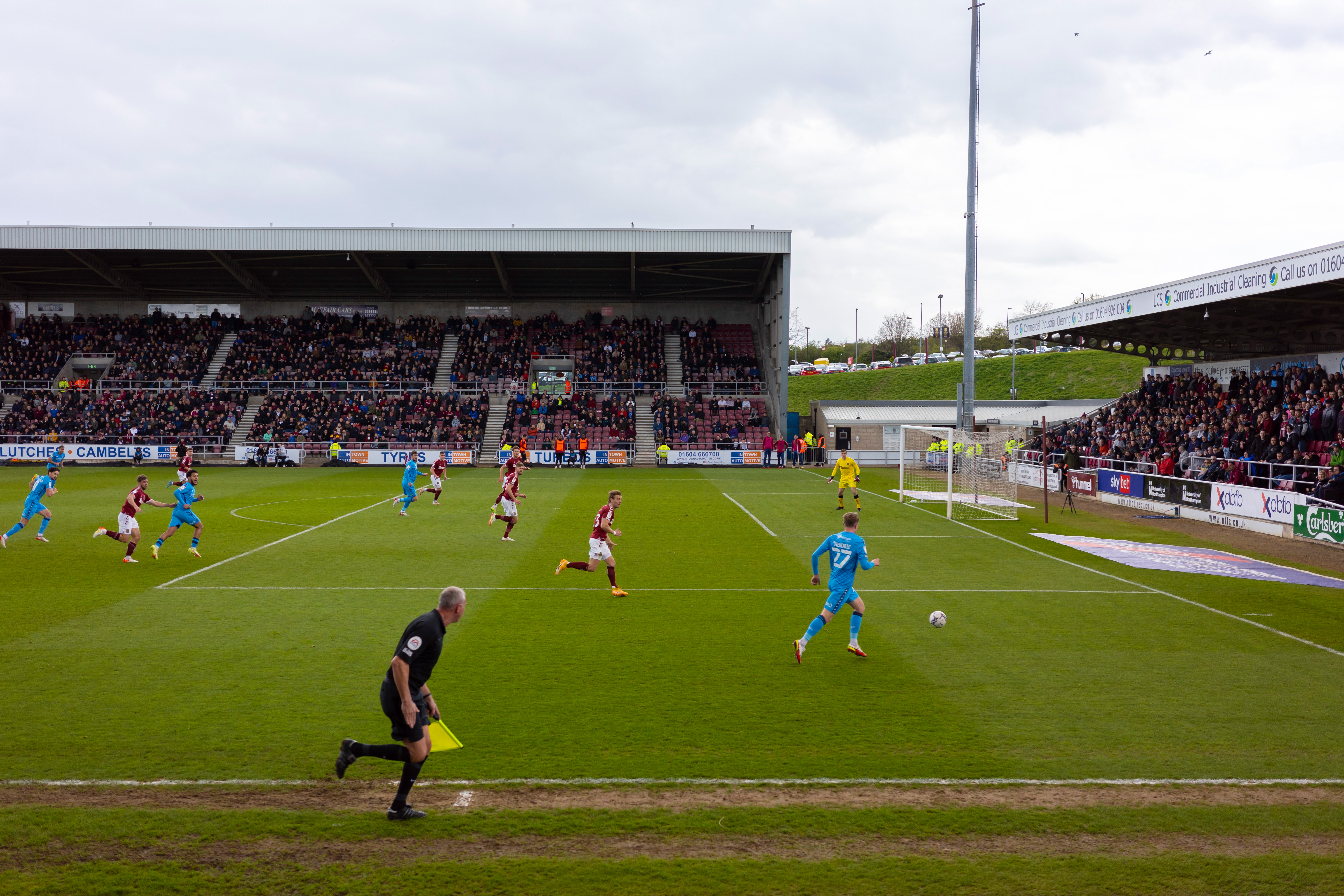
You might not have heard of Snap focus before. It’s rather smart, offering multiple pre-determined focus distance options that range from 1m to 5m plus infinity. Not everyone can judge if a subject is, say, 2m or 3.5m away. Thankfully then, the preset distance can be temporarily overriden via touch focus.
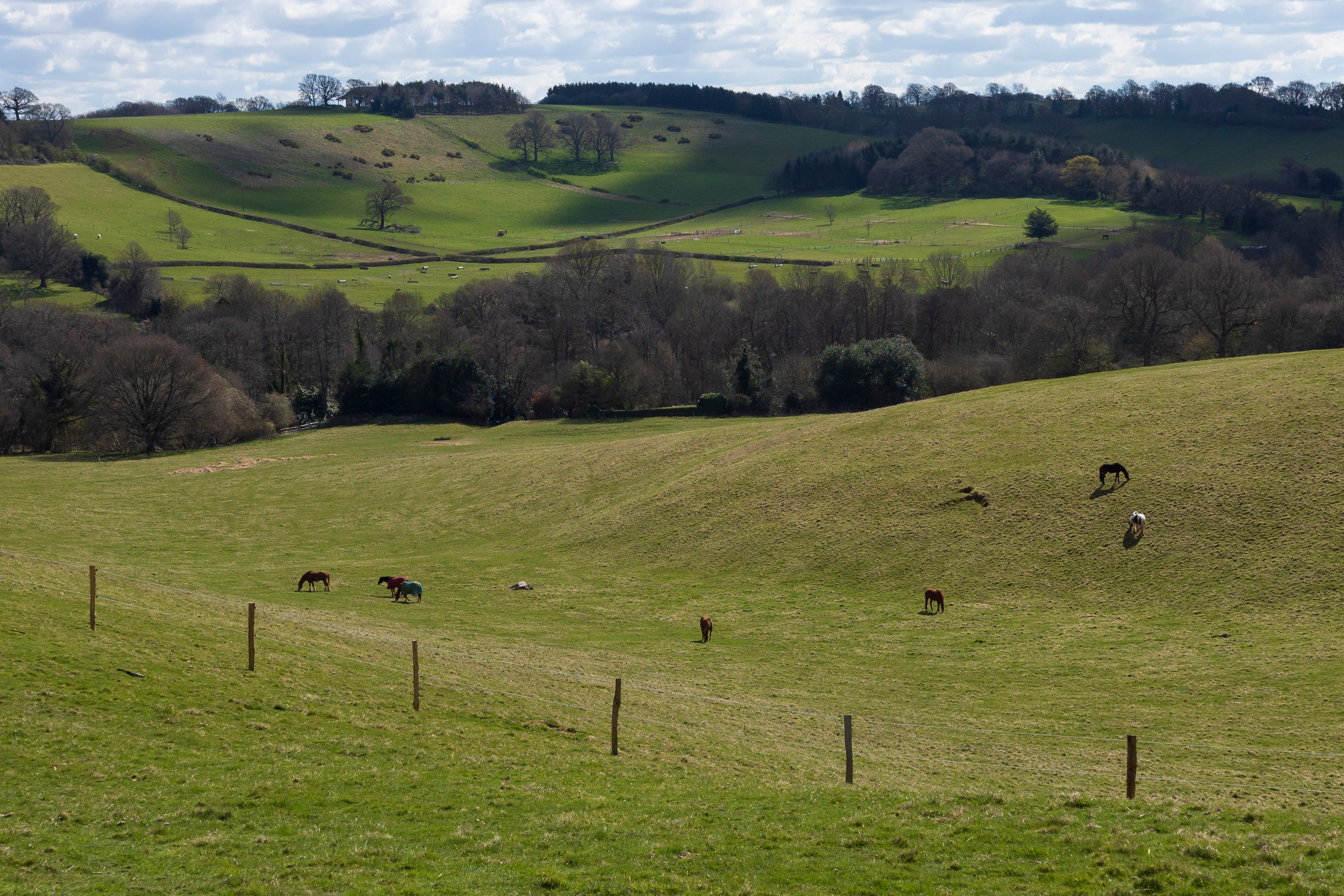
Pairing Snap and touch focusing became my natural choice for most scenarios, while I also appreciated that depth-of-field for the focus distance at any given aperture is displayed on screen in Snap Focus mode.
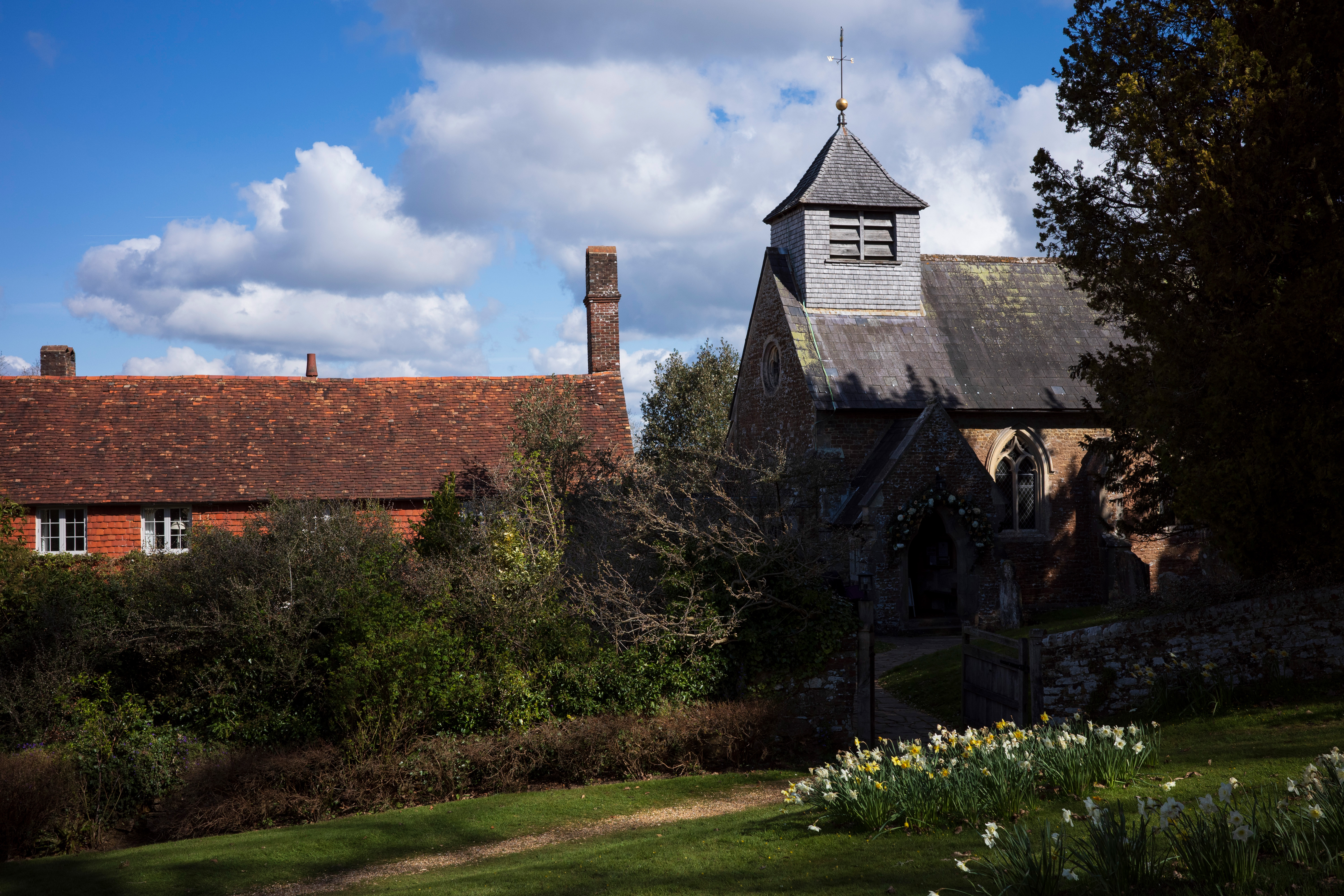
Other autofocus modes are a bit hit and miss. There’s certainly an AF performance improvement from previous generation Ricoh GR models, but those that are used to the best performing autofocus systems will become somewhat impatient with the GR IIIx’s focus hunting, especially in low contrast light. Tracking AF can struggle to stick to your subject, while face and eye detection AF are not the most responsive I’ve used, either.

Manual focus is controlled by the rear wheel (and not the lens ring) with the focus distance displayed on screen. You’ll need to power through multiple wheel rotations to shift those distances, which is great for micro adjustments but a real drag for extreme changes.
Performance
Starting off the blocks like a 100m sprinter and with its immediate shutter response, the GR IIIx is ready to capture decisive moments. However, action photography is another matter. Its continuous mode of 4fps (approx) is limited to short raw bursts, though you can get as many as 150 JPEGs in a burst before the camera slows up.

Sensor-based shake reduction aids hand-held shooting particularly at this sort of focal length, and the claimed 3-stops of stablisation should in theory enable sharp handheld shots using shutter speeds as slow as 1/4 sec. I got mixed results at this shutter speed – maybe 50/50 were sharp – whereas at 1/10 sec and with a steady hand I had a 100% success ratio.
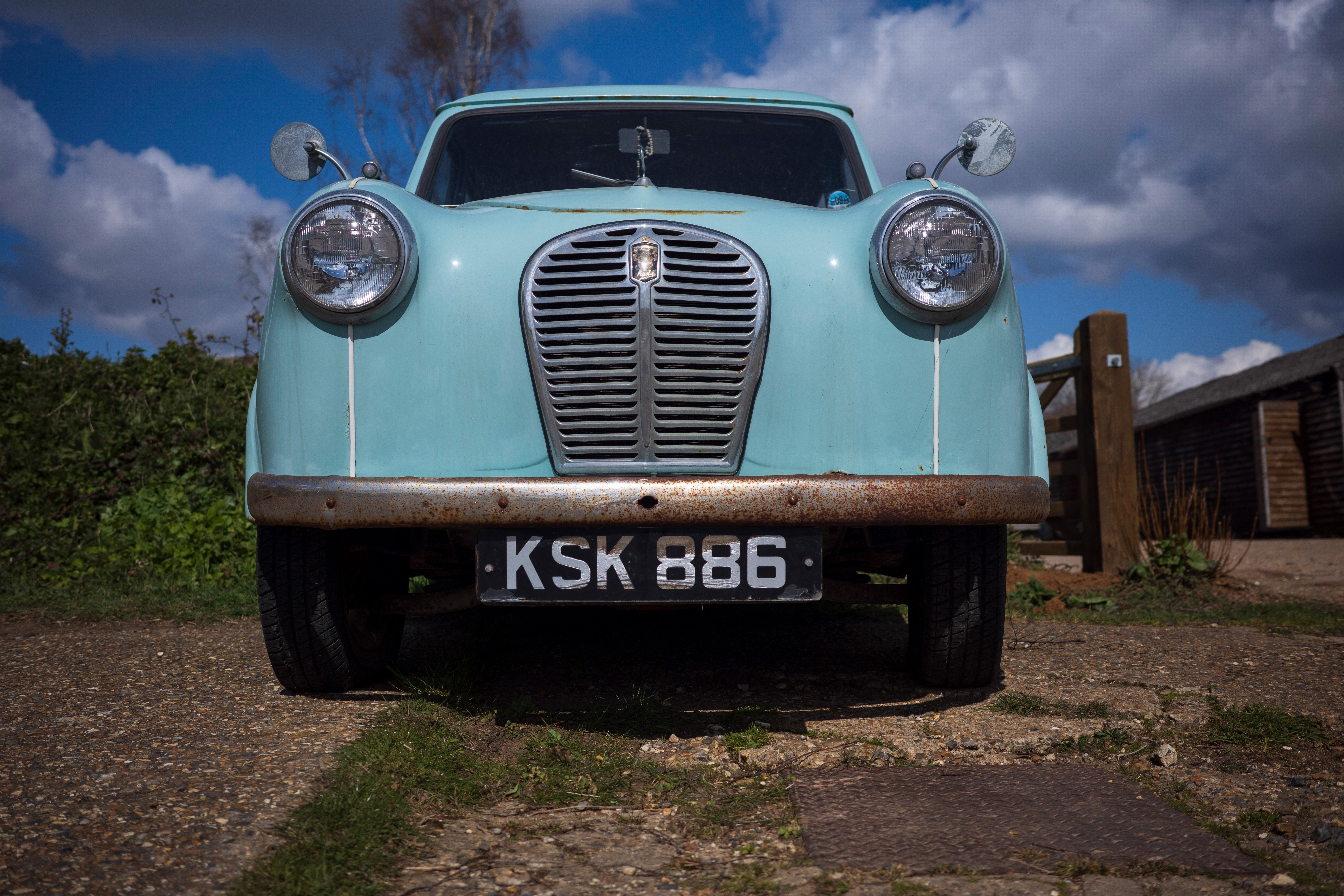
Elsewhere, evaluative metering does a solid job of getting a good all-round exposure with a risk of losing some highlight detail. After months with the camera, I have settled mostly on pairing highlight-weighted metering and exposure compensation. That way, I protect highlights and when the image appears too dark (which does happen with highlight metering), I can brighten things up quickly via the rear dial.
Image quality
Once you have honed your handling of the GR IIIx – especially focusing and composition – it is an extremely capable snapper. The 24MP APS-C CMOS sensor boasts a wide ISO 100-102,400 sensitivity range which realises excellent image quality in all kinds of lighting conditions.
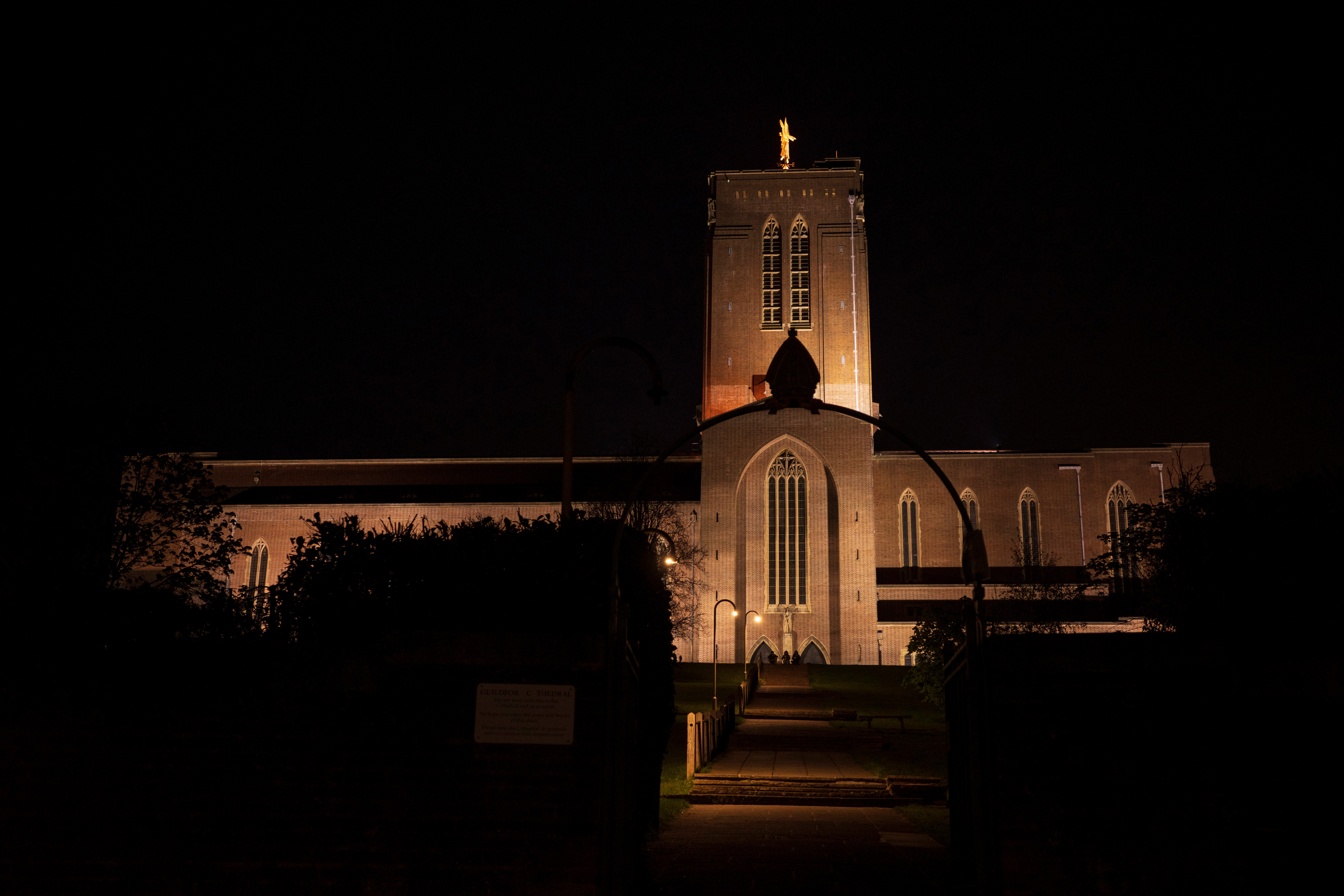
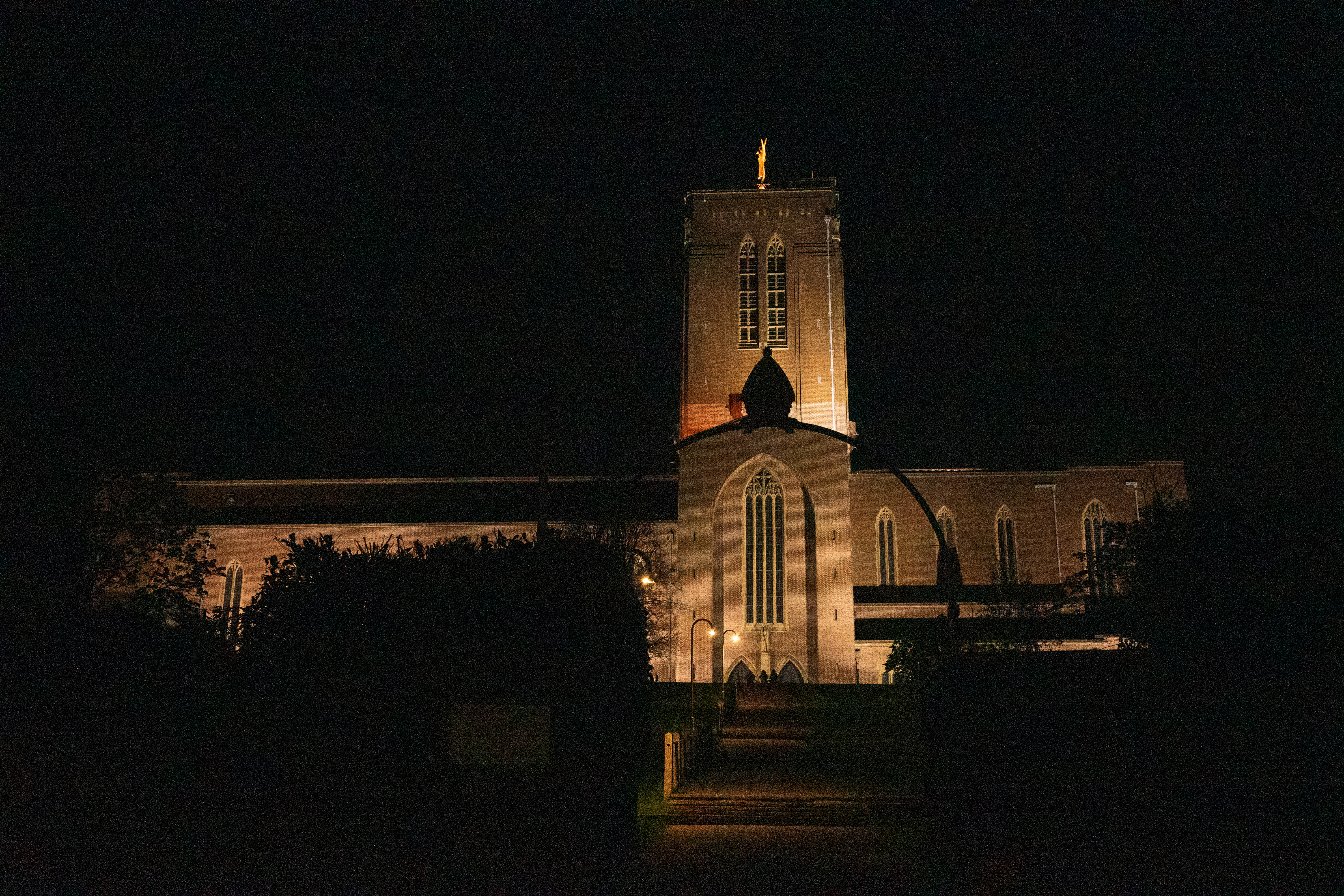
I’ve tried all of the ISO settings and found that ISO 100 to 1600 is essentially free of noise, up to ISO 6,400 still impresses. Beyond this setting, image detail begins to suffer. ISO 25,600 is still acceptable, though I generally avoid it and anything higher.
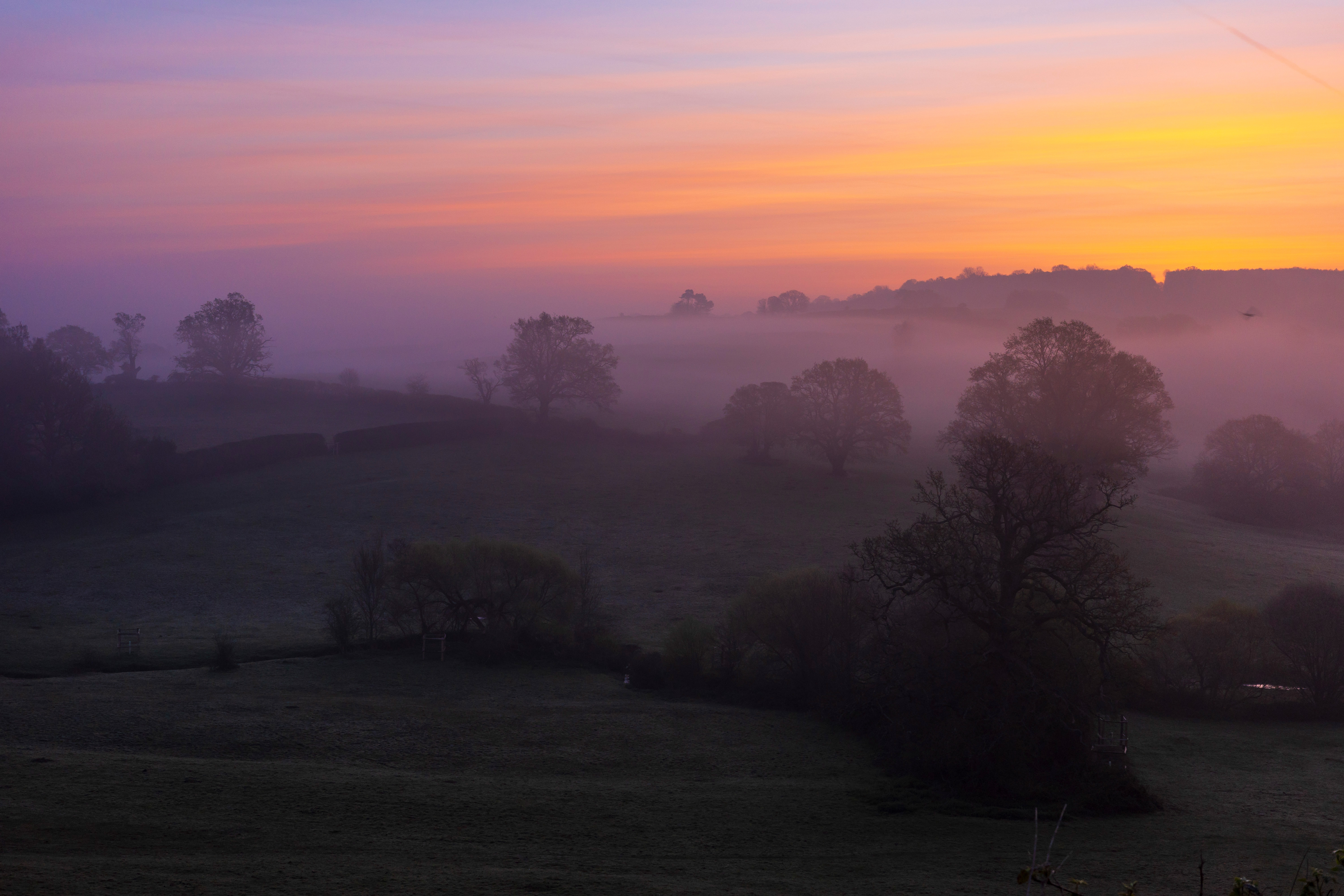
Dynamic range also impresses in daylight, with enough scope to recover detail from shadow areas in low-key highlight-metered images. However, brightening images by more than 2EV can reveal muddy shadow detail.
For such a compact lens, the 40mm f/2.8 delivers excellent sharpness across the entire frame. Looking right into the corners of forest scenes and every branch and leaf is as sharp as in the centre of the picture. The lens is slightly softer at f/2.8 and f/16, though that maximum aperture is still fine and delivers numerous other benefits, including shallow depth-of-field for portraiture and macro scenes.
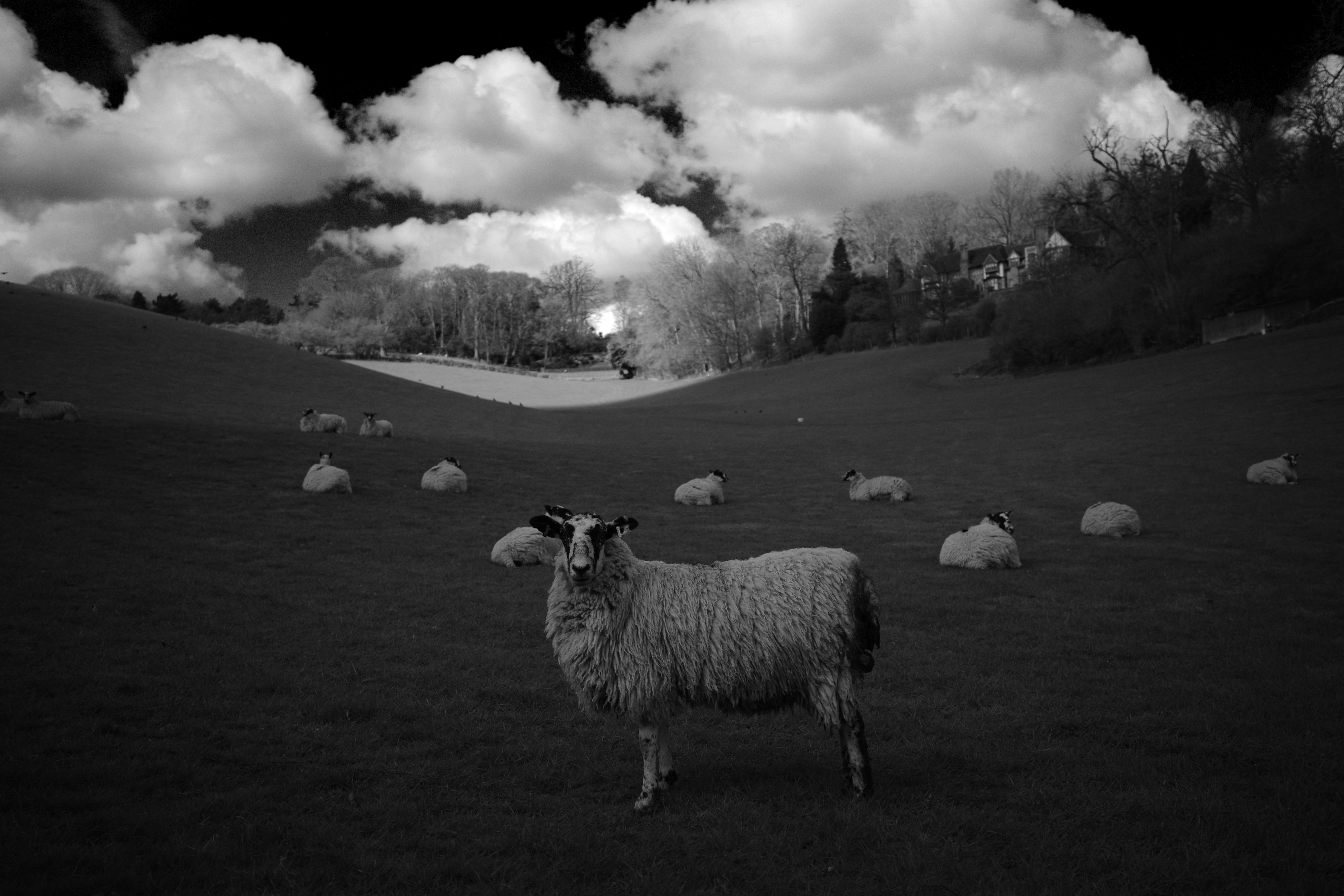
Focus fall-off is where the 40mm f/2.8 lens becomes a more compelling all-round optic than a 28mm one. Place your subjects in a sweet spot within a couple of metres and you’ll get a lovely blurry background at f/2.8.
Not only can you use this lens for portraiture, but a pleasant surprise is its macro prowess. The crop mode is useful for this close-focus photography genre and it’s genuinely possible to achieve a buttery smooth and round bokeh at f/2.8. The closer to your focus point, the larger those lovely bokeh balls can get. From my experience, there is no detrimental effect on image quality with the macro mode in play.

The maximum aperture displays pronounced vignetting. The effect of vignetting is found at every aperture, but it is significantly reduced by dropping the aperture to f/3.5. Ricoh offers in-camera ‘Peripheral Illumination Correction’ to remove this distortion at any stage of the image-making process.

Images are recorded in JPEG and/ or DNG raw format. DNG is universally accepted by software old and new and I’ve generally stuck with the GR IIIx’s raw format and ‘Standard’ profile. It’s a pleasant style in itself and a solid starting point from where extensive in-camera edits can be applied via raw Development.
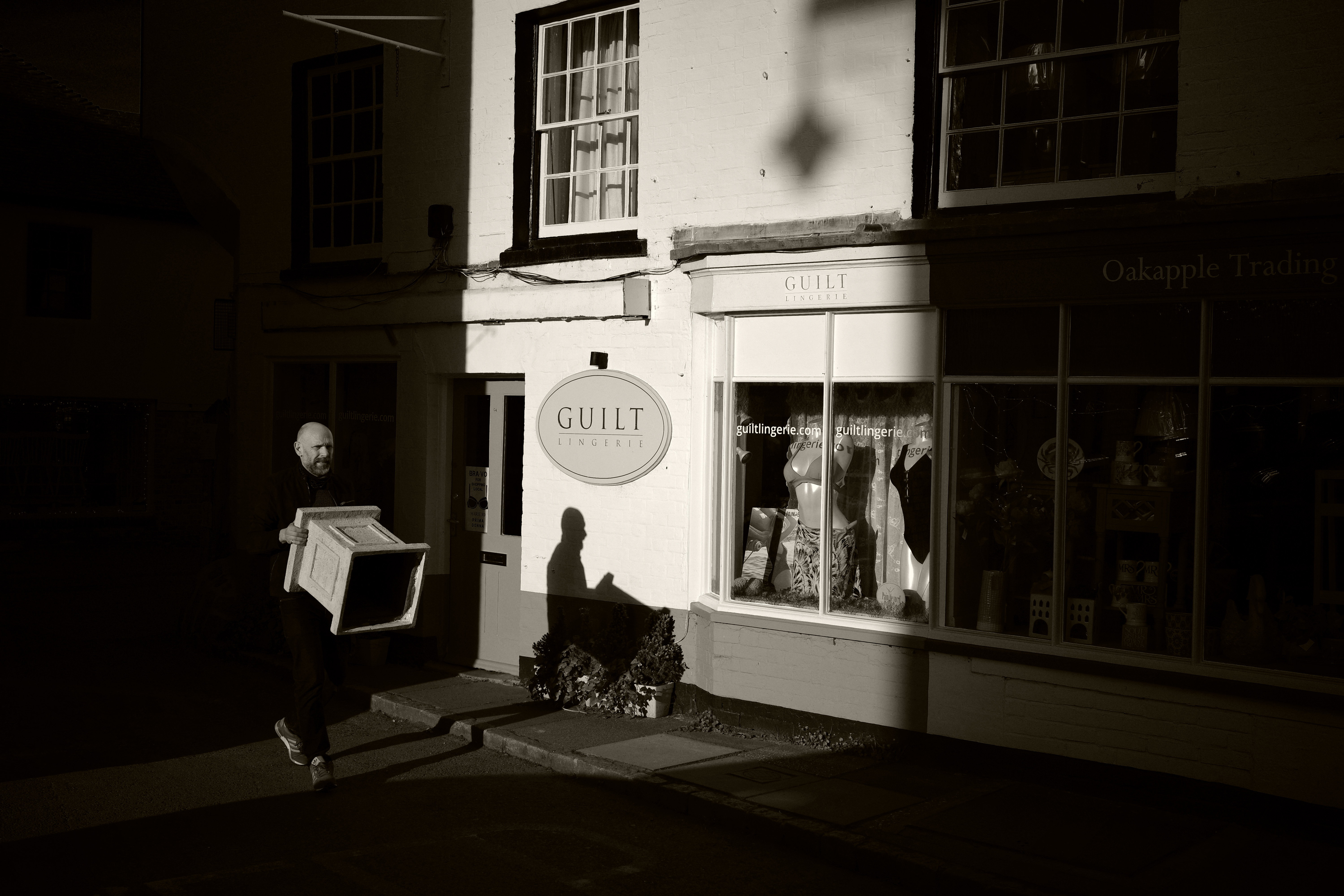
For example, I’ve often gone for a low-key feel as a starting point to daylight images, applying shadow correction and exposure compensation ±1EV to bring out tonal detail. The Hard Monotone style is also a perfect partner to highlight metering, deepening those shadows for a dynamic mood.
I can’t remember the last time I had so much enjoyment in converting images to black and white. In fact, raw Development in general becomes a natural part of the GR IIIx process, especially considering how easy it is to then upload images on the fly to a smartphone using Ricoh’s ‘Image Sync’ app.
Ricoh GR IIIx Verdict
The Ricoh GR IIIx is a well positioned niche alternative to smartphones and big cameras, offering a wonderful mix of the two. I feel there is enough here to compel smartphone users considering a ‘real’ camera, and experienced photographers who want a ‘proper’ photographic tool in their pocket.
If I’m going to bother using a camera instead of my smartphone, first and foremost it needs to deliver excellent image quality in any kind of light. This has been achieved in the GR IIIx thanks to its 24MP APS-C sensor, DNG raw capture and sharp 40mm f/2.8 lens.
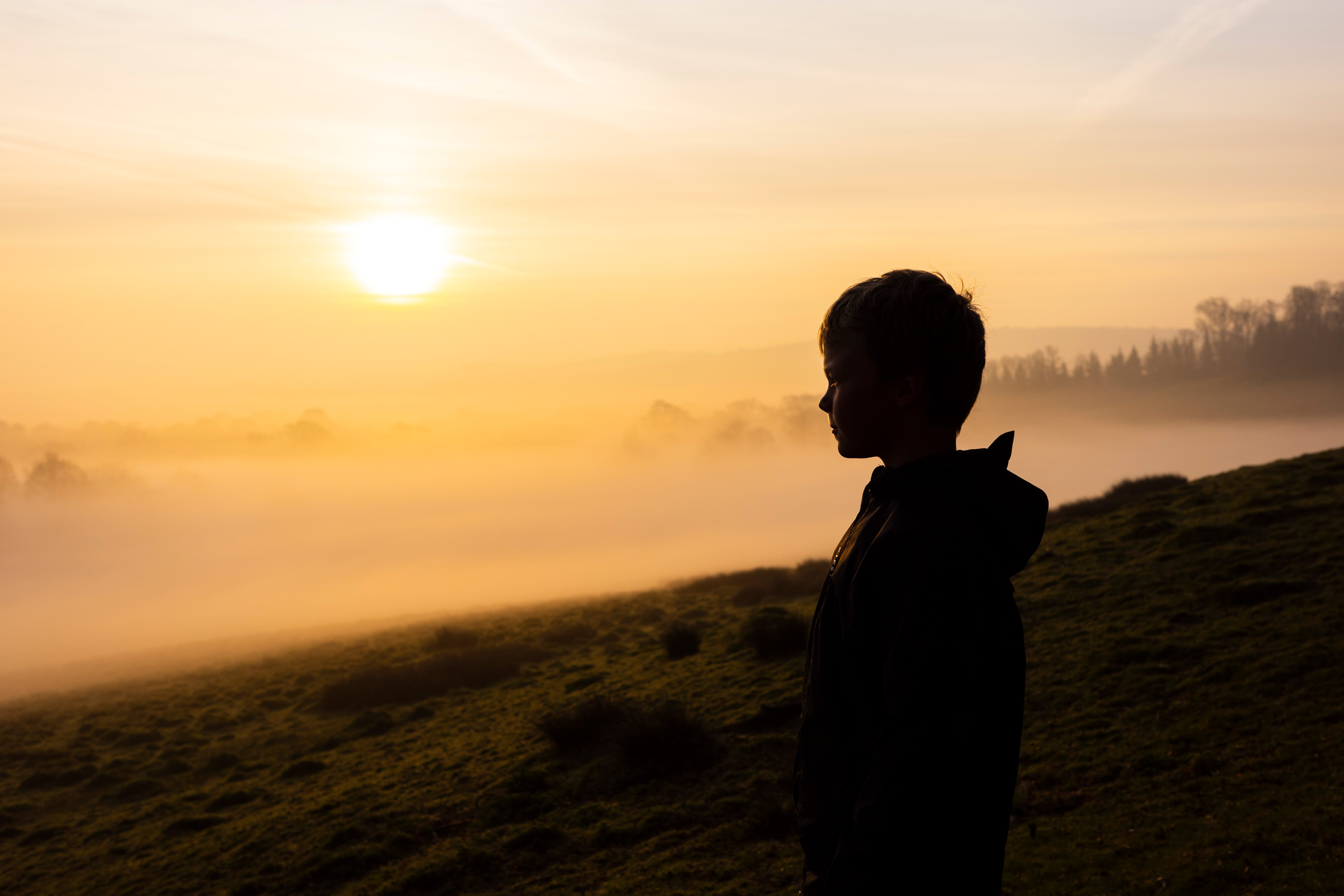
GR III owners can rest assured that the lens quality is as good in the GR IIIx, with sharp detail from centre to edges. And with that new longer focal length, focus fall-off control is greater, the GR IIIx being more capable of ‘big-camera’ looking shots than the GR III. Overall, I prefer 40mm lens because in addition to general scenes, portraits and macro feel way more achievable.
Of course, there were times I wanted to be wider than 40mm and I’d happily have the 28mm GR III in my other pocket too! Who knows, having successfully realised the GR IIIx, perhaps Ricoh will take the Sigma Quattro route and introduce a telephoto version with a 75mm equivalent lens.
The GR IIIx also handles really well. It has a rapid sub-one-second start up time, quick shutter response, comfortable single-handed operation and intuitive controls that has satisfied me as an experienced photographer; especially as I have got to know it and taken the time to set it up how I like.
Crucially, this is a camera that slips easily into a trouser pocket – that’s no mean feat considering the Ricoh-quality optics and APS-C sensor on board. The GR IIIx doesn’t necessarily top the scores in a review format, but ultimately is a camera than I can and want to have in my pocket all the time: the impact its constant presence has had on my creative life cannot be undervalued.

For more options, have a look at the best compact cameras, as well as the best cameras for street photography.




